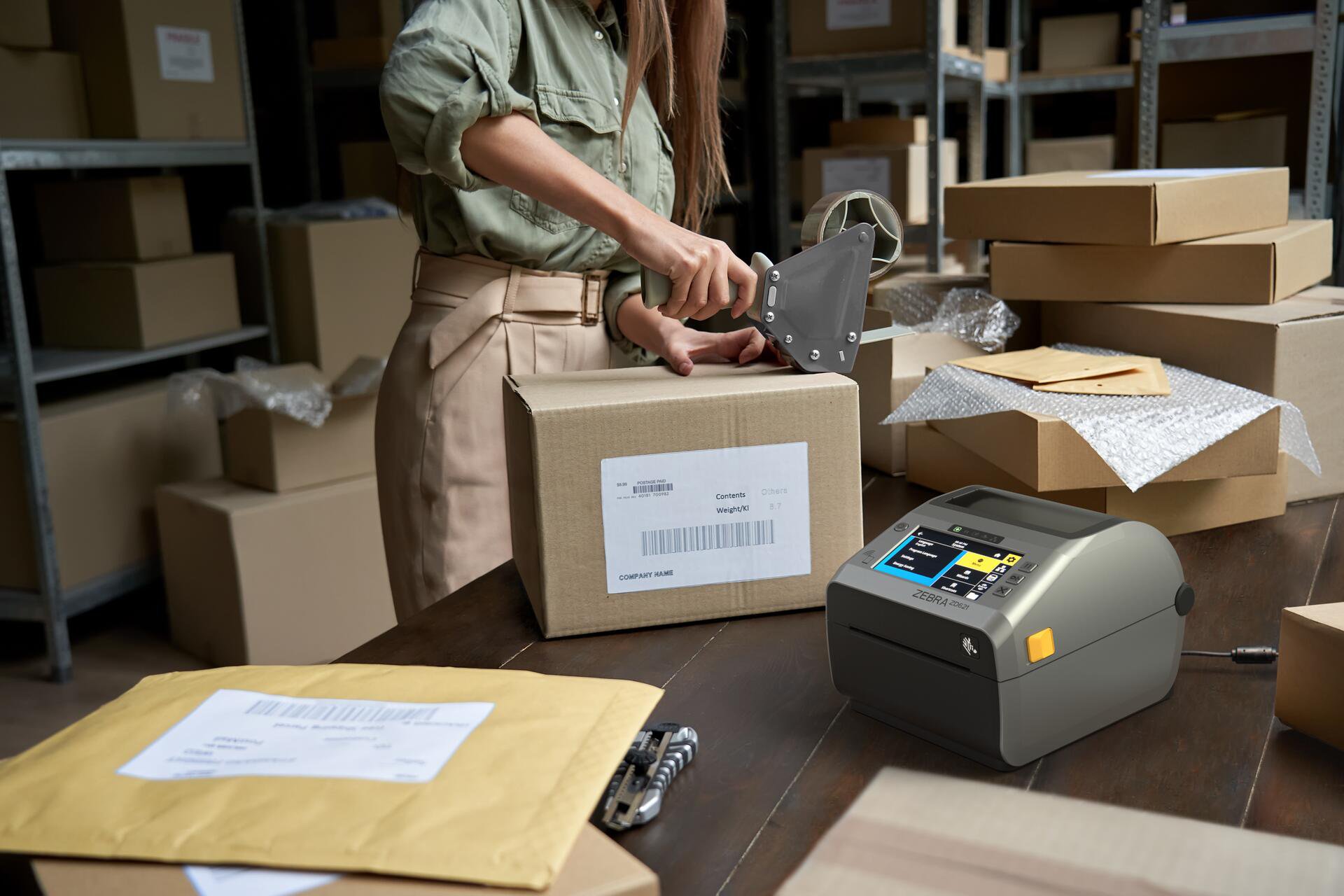When it comes to printing labels, should you choose thermal transfer or direct thermal printers for your business? The answer is that it depends on your business application and label environment. This post explains the difference between the two types of thermal printers, and will help you to choose the right printing method for your needs.
What are thermal transfer and direct thermal printing?
Both printing methods are classed as thermal printing because they involve a printhead containing several heating elements which selectively apply heat to the surface being printed on. A microprocessor determines which individual elements are heated, and the printhead spans the entire width of the material being printed on.
The difference between the two methods is the surface that the heat is applied to.
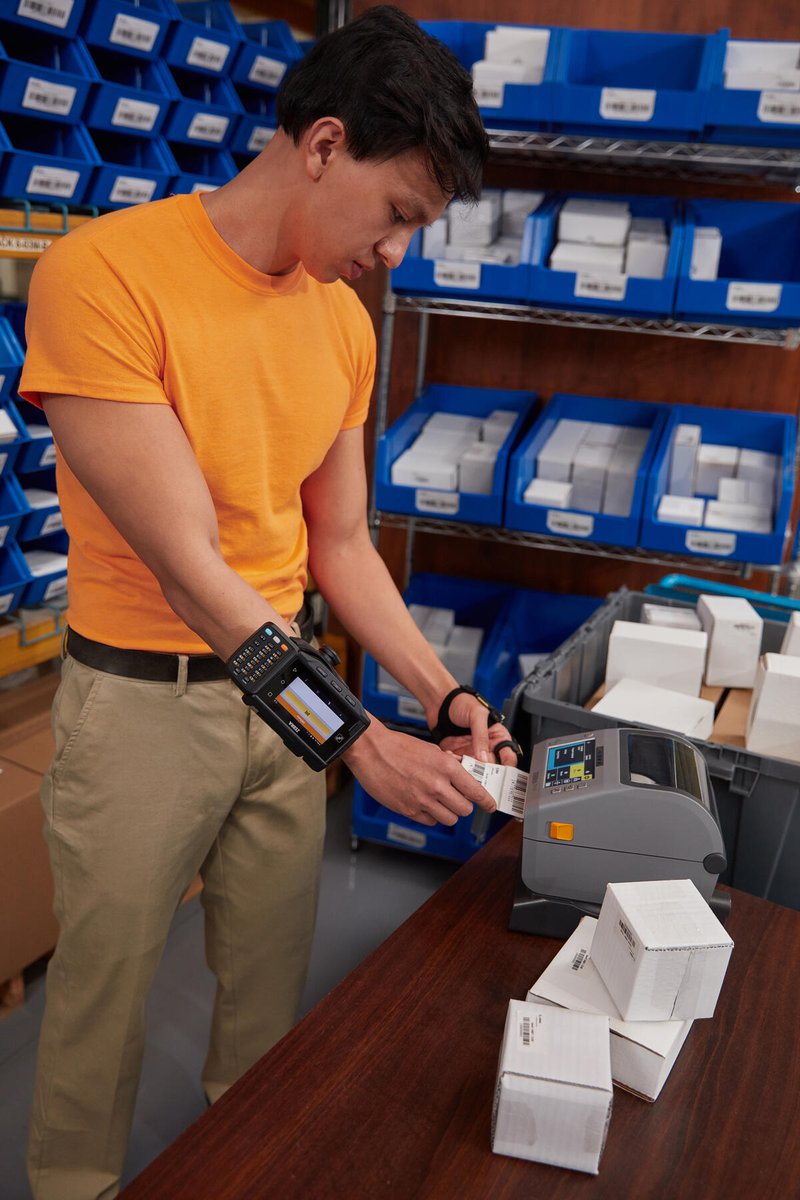
Direct thermal printing
Direct thermal printing involves the printhead directly heating a coated thermal label. The heat-sensitive coating on the thermal label turns black in the areas that are heated, producing a printed image.
As direct thermal printing uses chemically-treated, heat sensitive material that turns black when directly heated by a thermal printhead, no ink, toner or ribbons are needed.
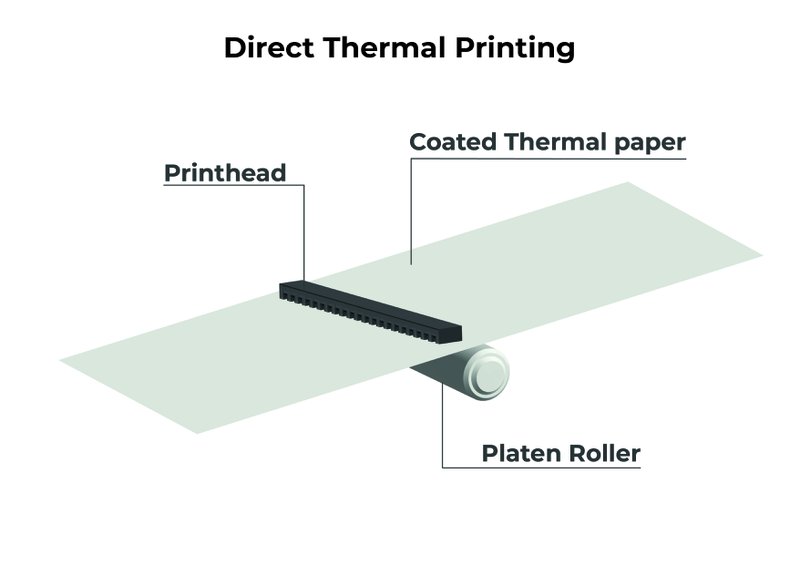
Thermal transfer printing
Thermal transfer printing works in a similar way, but they key difference is that this method uses heat-sensitive ribbon, rather than a thermal label. In a thermal transfer printer, both the label and the ribbon pass through the printhead. When the elements in the printhead are heated, the ink from the ribbon transfers onto the label.
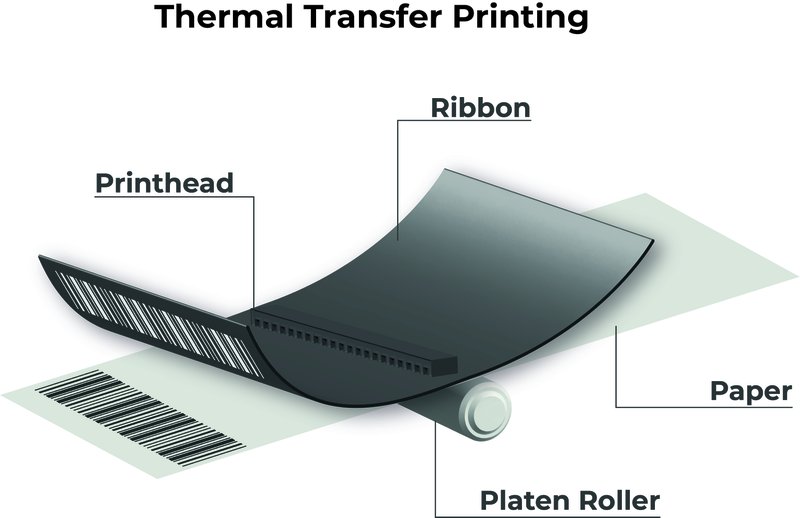
Both methods create high quality and high definition images so work well for barcodes, and both can print linear and two-dimensional barcodes, such as QR codes.
So which should you use?
Here are some key points to think about.
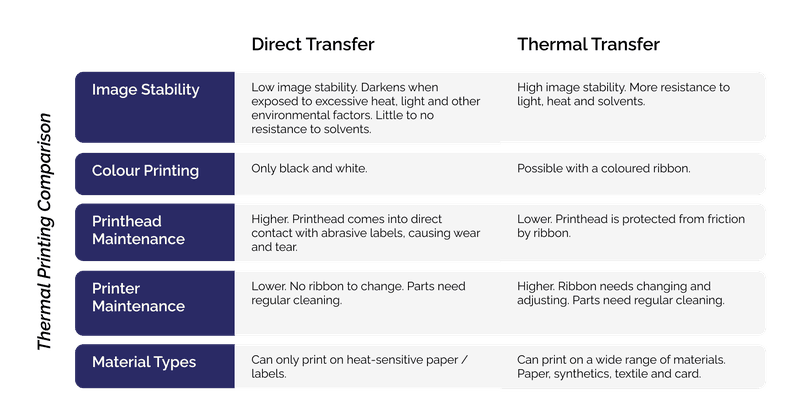
Conclusion
Direct thermal printing cuts out the additional cost and printer maintenance that comes with adding a ribbon. However, there is extra printhead maintenance, and limited material and colour options . Direct thermal printing creates simple and cost effective labels that are best suited to indoor and temporary use, for example shipping labels or receipts.
For outdoor and more durable use, thermal transfer printing is the better option. Images and labels are less likely to discolour with environmental exposure. Changing ribbons increases printer downtime, but the ribbon is a buffer between label and printhead. This makes the printhead less susceptible to wear and tear. If you need more flexibility in colour or label material then thermal transfer printing is the only choice.
Need more help?
Contact our team for a quote or free expert advice on label printing. We can help you find the best label printers to suit your unique business need.
Looking for supplies or parts for your Zebra Printer? The Zebra Supplies Selector Tool can help. Contact us to place an order.
You can also visit our website for more on our services.

